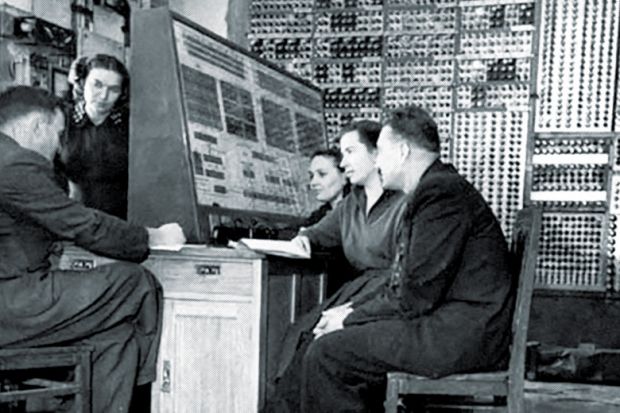The almost explosive dissolution of the Soviet Union left behind vast stores of material relating to projects, plans and political infighting that had been studiously hidden from the West. Over recent decades, academics have mined these rich, but often arcane, resources and brought the edited highlights of the internal structures that ran the Soviet system to a new, and eager, audience. There have been many remarkable testaments of struggle, with the individual brilliance of leading figures in heroic counterpoint to the Byzantine, obstructive complexities of committees or competing campaigns – and this intriguing text by Benjamin Peters continues this illustrious tradition.
Using documents gleaned from an agreeably eclectic range of sources, both from the former Soviet Union and Western collections including that of the CIA, Peters draws an intensely vivid picture of the uneven fortunes of computing network developments during the last 20 years or so of Soviet rule. For those engaged in research that might lead to new information solutions, the official Soviet line on their field of work is not encouraging. We learn that in 1954 a Soviet dictionary defined cybernetics as “a reactionary pseudo-science that appeared in the USA after World War II” – not an overwhelming mandate, and an attitude that post-Stalinist thinking took some time to address.
The goal of building a national electronic infrastructure for exerting economic control was an attractive one for the USSR in the 1960s and 1970s. Local centres and industries gained some immediate benefit from the introduction of linear programming models and other electronic decision support systems, but the target of a fully networked economic base across the nation proved tauntingly elusive – with far more than merely technical difficulties being encountered. Peters talks of the OGAS project, probably the most complete attempt to introduce civilian computer networks in the Soviet era, as a potential means of delivering “Electronic Socialism” – reinforcing the appeal of control in a planned economy. Perhaps inevitably, the proposed network and information processing infrastructure was itself complex, multi-tiered and rigidly directed – almost the antithesis of the deliberately flexible, self-healing, packet-switched networks that were under development in the West at the time.
The deployment in the US in 1969 of the Arpanet, the commercial internet’s effective precursor, appears to have signed the death warrant for this inflexible information infrastructure, and the Soviet Union never reached the level of network-integrated economic governance it sought. OGAS was lost in a sea of committees, personal conflicts, vested interests and glacially paced bureaucracy. Ironically, it was out-competed by a technology created partly to try to offset the threat to Western survival from a Cold War Soviet first strike.
While I had hoped for more technical information on the Soviet information systems in this narrative, it is nevertheless an immersive read that covers the ground in impressive detail. Before anyone gets too smug about Western superiority, however, it would pay to recall that while the Arpanet did indeed signal the way to a global information infrastructure, it was far from the everyday reality of Western civilian computing at the time. It was not until the 1980s that US and European commercial networks began seriously to evolve beyond the fractious tangle of proprietary tools and semi-standards that plagued so many networking projects of the time. The West has its own “How Not to Network a Nation” story just waiting to be told.
John Gilbey teaches in the department of computer science at Aberystwyth University.
How Not to Network a Nation: The Uneasy History of the Soviet Internet
By Benjamin Peters
MIT Press, 312pp, £28.95
ISBN 9780262034180 and 2334174 (e-book)
Published 25 May 2016
Register to continue
Why register?
- Registration is free and only takes a moment
- Once registered, you can read 3 articles a month
- Sign up for our newsletter
Subscribe
Or subscribe for unlimited access to:
- Unlimited access to news, views, insights & reviews
- Digital editions
- Digital access to THE’s university and college rankings analysis
Already registered or a current subscriber?




